
- Solar Energy - Introduction
- Solar Energy - Photovoltaic Effect
- Developing Solar Panel
- Solar Energy - Cell Efficiency
- Types of Photovoltaics
- Geothermal Energy
- Geothermal Energy - Introduction
- Geothermal Energy - Extraction
- Geothermal Energy - Geophysics
- Hydroelectric Power
- Hydroelectric Power - Introduction
- Hydroelectric Power - Turbine Types
- Hydroelectric Power Systems
- Hydraulic Ram Pump
- Renewable Energy Resources
- Renewable Energy - Quick Guide
- Renewable Energy - Resources
- Renewable Energy - Discussion

Renewable Energy Tutorial
Renewable Energy (RE), also referred to as Green Energy, Clean Energy, or Non-Conventional Energy, is a form of energy obtained from natural resources that can replenish within a very short span of time. Some common examples of renewable energy resources include the Sun (solar energy), wind (wind energy), geothermal, water (hydro-energy), bioenergy, etc.
Renewable energy is being adapted these days at a large scale to produce electricity. It is also being used in small, localized settings as well. Renewable energy is gaining popularity because of its significant benefits like efficient heat transfer, vehicle power, cleanliness, emission-free production, lower production cost, etc.
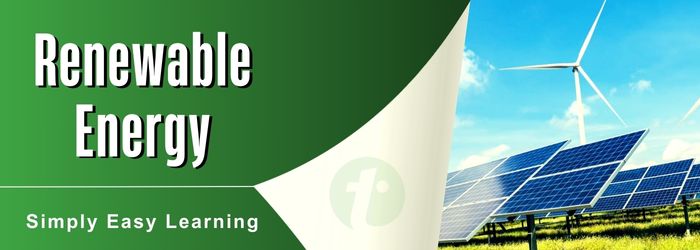
It is also important to note that renewable energy sources are sometimes referred as non-conventional energy sourcesbecause they are newer forms of energy resources. Use this tutorial as your go to resource to learn the basic concepts of various forms of renewable or green energy.
What is Renewable Energy?
Renewable Energy is a form of energy obtained from natural resources that can replenish (renew) within a very short span of time. Therefore, renewable energy is obtained continuously from its sources. Solar energy, wind energy, hydro energy, geothermal energy, biomass, biogas, etc. are common examples of renewable energy.
Renewable energy is playing a vital role in four main areas namely, electricity generation, water and space heating, vehicle powering, and rural electrification.
The main objective of renewable energy and its widespread use is to lower the carbon emissions. For this reason, it is also referred to as low-carbon energy. However, it is important to note that some renewable energy sources like biomass also cause intensive carbon emission, which must offset by planting new plants.
It is also an important fact about renewable energy that it is different from sustainable energy and heavily depends on weather conditions. Therefore, multiple energy sources are grouped together to create a sustainable renewable energy system that can fulfil the energy demand. For example, solar energy systems can be integrated with thermal power plants.
Types of Renewable Energy
The following are some most common types or forms of renewable energy along with their key benefits −
Solar Energy
Energy obtained from the sun is referred to as solar energy. It is the most common form of renewable energy which gaining popularity in modern days. Solar energy is most widely used for electricity generation. For this, solar panels consisting of photovoltaic cells are used to capture energy from sunlight and convert it into electricity.
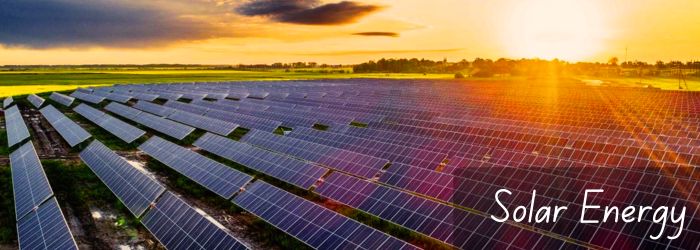
The following benefits make solar energy one of the most popular form of renewable energy −
- It is available in most abundant.
- It becomes affordable with technological advancements.
- Solar energy helps reducing electricity bills significantly.
- It helps reducing carbon emissions.
Because of these advantages, solar energy is being widely used in Electricity generation, Water and space heating, Vehicle powering, etc.
Wind Energy
Wind energy is the second most common form of renewable energy in which energy is obtained from blowing wind. To capture the wind energy, devices called wind mill or wind turbine are used. Wind mills or turbines are connected to generators that produce electricity. Wind turbines are generally installed in regions having consistent and strong wind flows.
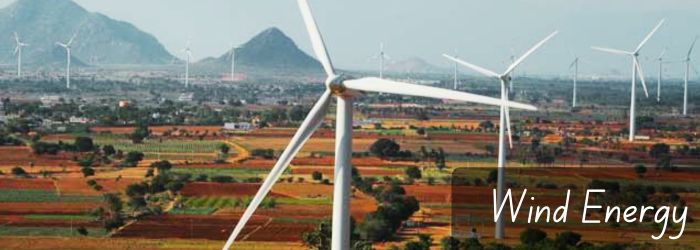
The following are some key benefits of wind energy, making it a valuable renewable energy resource −
- It is clean and does not cause carbon emissions.
- It offers several economic benefits like creating job opportunities, lowering electricity prices, etc.
- It is available in abundant and is inexhaustible
Wind energy is most widely used for generating electricity by creating wind farms.
Hydro Energy
Hydro Energy, also known as hydropower or hydroelectric power, is a form of renewable energy obtained from moving water. Hydro energy is generally obtained from large rivers by creating dams on them. It is one of the cheapest forms of energy to generate electricity.
In hydro energy, the kinetic energy of moving water is used to spin a water turbine and the turbine is in turn connected to a generator that produces electricity. It is a conventional, but renewable source of energy, and being used as a reliable energy resource for decades.
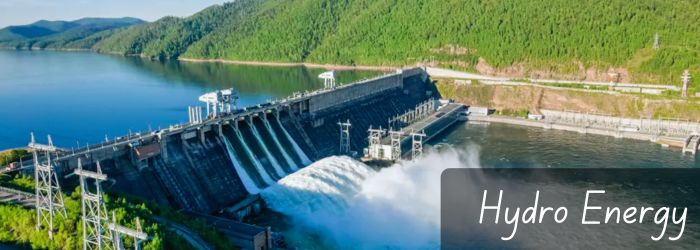
The following benefits highlight the importance of hydro energy in the electricity sector −
- It is renewable energy resource dependent on water cycle.
- It is clean and does not produce greenhouse emissions.
- It is flexible in terms of output control.
- It is very cost effective in terms of operations.
Geothermal Energy
Geothermal energy is a form of renewable energy obtained from the Earth. It is used for producing electricity. Geothermal energy is available in the form of hot water in certain areas and accessed through hot springs or deep wells.
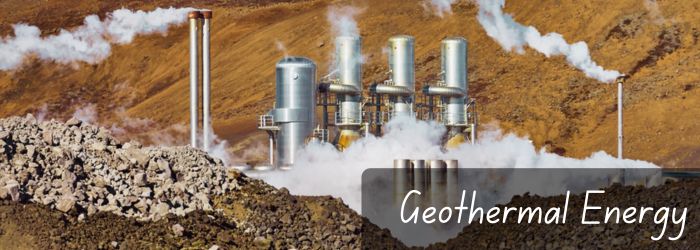
The following benefits include the geothermal energy in the list of important renewable energy resources −
- It is clean and does not involve burning of fossil fuels, and hence no greenhouse emission.
- It is consistently available 24*7 and does not depend on the weather.
- Geothermal plants are compact and have longer life span.
Bioenergy
Bioenergy is another type of renewable energy obtained by burning organic materials like wood, crop wastes, animal dung, etc. The burning of biomasses produces heat that can be used for generating electricity. Carbon dioxide is also released as a bi-product of burning biomasses which is absorbed by regrown plants and creates a balanced carbon cycle in the environment.
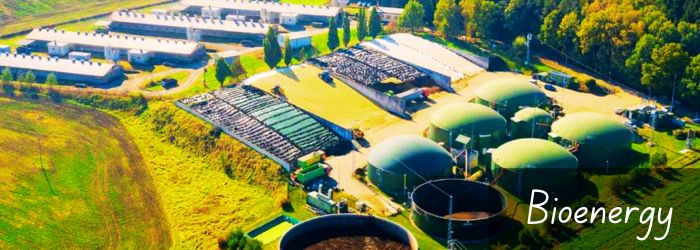
Some of the key benefits making bioenergy an important renewable energy resource are listed below −
- It reduces waste materials on the earth.
- It helps reducing dependence on fossil fuels.
- It creates local jobs and business opportunities.
How Does Renewable Energy Work?
The following table gives a working overview of different forms of renewable energy −
| Renewable Energy | Working Description |
|---|---|
| Solar | Solar panels capture energy from sunlight and converts it into electricity using photovoltaic technology. |
| Wind | Wind turbines use kinetic energy of blowing wind to spin and drive a generator to produce electricity. |
| Hydro Energy | Water turbines are used to convert kinetic energy of flowing water into electricity using a generator. |
| Geothermal | Pumps are used to extract hot water from beneath the surface of the Earth and use it to produce steam to drive turbine and hence generator. |
| Biomass Energy | Organic materials like wood, crop residues, etc. are burnt to produce heat and generate electricity. |
Advantages of Renewable Energy
Renewable energy offers several benefits in respect of environment, sustainability, economy, etc. Some of the major advantages of renewable energy are listed here −
- Renewable energy is free from carbon and other harmful greenhouse emissions.
- Renewable energy helps reducing global warming.
- Renewable energy reduces the dependence on fossil fuels for energy needs.
- Renewable energy also contributes in creating new job and business opportunities.
- It also helps lowering the energy prices.
Challenges of Renewable Energy
Apart from benefits, renewable energy also has challenges or barriers in adoption, and some of the key are listed below −
- Renewable energies like solar or wind are of intermittent nature, as they are not always available. They also affected by the weather conditions.
- Renewable energy requires storage for later use, as it is not always available.
- Renewable energy systems require higher capital cost for setting up.
Renewable Energy Terminology
The following terms and definitions are important and very helpful in grasping the concepts covered in this tutorial −
Solar Panel
A device that combines multiple solar PV cells to converts energy from sunlight into electricity is known as a solar panel.
Photovoltaic (PV) Cell
A non-mechanical device that can convert energy from sunlight into electricity by using photoelectric effect is called a photovoltaic cell. PV cell is also called as solar cell.
Wind Turbine
A wind turbine is a mechanical device that converts kinetic energy of wind blows into electricity is called a wind turbine. It consists of two major parts namely, rotor blades and electric generator.
Energy Storage
Energy storage is a technology for storing electricity generated by renewable energy sources like solar, wind, etc. and use it later during unavailability of energy. Like electricity produced by solar energy is stored in batteries during day time and used during night hours.
Carbon Footprint
Carbon Footprint is defined as the total amount of greenhouse gases produced by our activities.
Net-Zero Emissions
Net-Zero Emission, also termed as Net Zero, is a practice that balances all emissions produced by human actions by removing carbon from the atmosphere.
Grid Integration
Grid integration can be defined as a process of integrating or adding new energy sources into the existing power system.
Green Hydrogen
Hydrogen produced by the electrolysis of water and makes use of electricity produced by renewable energy sources is called as green hydrogen.
Offshore Wind Farms
Wind farms which are located in water bodies like seas to produce electricity are called offshore wind farms.
Energy Efficiency
Energy efficiency is a parameter that describes minimal use of energy to perform a specific task.
Feed-in Tariff
A policy which is specially designed to support the development of renewable energy by ensuring that producers will get higher prices is termed as feed-in tariff.
Smart Grid
A smart grid is an advanced electricity network that combines digital technologies and two-way communication with traditional electric network. This is primarily designed for meeting the increasing demand of electricity, reduce energy losses, minimize costs, and improve the grid stability and reliability.
Distributed Generation
Distribution generation is defined as the generation of electricity from sources near the point of use, instead of generation from centralized sources like power plants.
Learning Goals for This Renewable Energy Tutorial
In this Renewable Energy tutorial, you will learn about the following key concepts of renewable energy −
- Introduction to Renewable Energy − In this chapter, you will learn about basics of renewable energy and its importance in creating a cleaner and sustainable energy future.
- Introduction to Solar Energy − This part of the tutorial will explain the fundamental concepts of solar energy.
- Photovoltaic Effect − This section will describe the process of converting energy from sunlight into electricity.
- Developing Solar Panel − This chapter will describe the process of designing and manufacturing solar panels.
- Cell Efficiency − In this section, we will learn about efficiency of solar cell and factors affecting it.
- Types of Photovoltaics − This part will explain different types of photovoltaic technologies.
- Introduction to Geothermal Energy − This chapter will explain the concept of geothermal energy and how it is used to produce electricity.
- Geothermal Energy Extraction − In this chapter, you will learn the process and different methods of extracting the geothermal energy from beneath the Earths surface.
- Geophysics − This part will help you to understand the principles of geophysics and their role in production of geothermal energy.
- Introduction to Hydroelectric Power − In this chapter, you will learn the process of generating electricity from flowing water.
- Hydroelectric Turbine Types − This chapter explains the construction and features of different water turbines.
- Hydroelectric Power Systems − In this chapter, you will learn about the construction and components of a hydroelectric power system.
- Hydraulic Ram Pump − This section explains the working of a device called hydraulic ram pump, which is used for lifting water to a higher level without electricity.
- Introduction to Wind Energy − This chapter will introduce the fundamentals of wind energy and its importance in the renewable energy sector.
- Basic Theory of Wind Energy − In this part, you will learn about how wind energy turns a wind turbine to generate electricity.
- Wind Turbine Types − In this chapter, we will understand the construction and applications of different types of wind turbines.
- Introduction to Bioenergy − This chapter will explain the basic concepts of energy obtained from organic waste materials, called bioenergy.
- Biomass Production − This chapter will discuss different process for producing biomasses.
Who Should Learn Renewable Energy Basics?
This tutorial on Renewable Energy will be useful for any of the following −
- Undergraduate college/university students studying green energy technology
- Anyone who wants to make his career in the Renewable or Green Energy sector
- Students and engineers curious about renewable vs non-renewable energy
- Anyone who is willing to learn about current and future of green (clean) energy sector
Prerequisites to Learn Renewable Energy
This tutorial on Renewable Energy is primarily meant for beginners who want to learn the fundamentals of renewable energy. It is not mandatory, but if the reader has a basic understanding of certain concepts of elementary physics, mechanics, environment, and basic mathematics, then grasping the concepts covered in this tutorial will become smoother.
FAQs on Renewable Energy
In this section, we have collected a set of Frequently Asked Questions (FAQs) on Renewable Energy, followed by their answers.
Green Energy can be defined as a subset of renewable energy which is produced using methods or from sources that have no harmful impact on the natural environment.
Clean energy is a type of energy obtained from zero-carbon energy sources and do not pollute the environment anyway, whereas renewable energy is the energy obtained from sources that naturally replenish themselves within a very short span of time.
The step-by-step working of a solar panel is explained here −
Step 1 − Sunlight strikes on the photovoltaic cell of the panel.
Step 2 − The electrons in the semiconductor wafers of the PV cells get energized.
Step 3 − Energized electrons come into motion by electric field surrounding the semiconductor wafers.
Step 4 − The moving electrons create an electric current.
Wind energy is a highly reliable energy source because of the following major reasons −
- Available in abundant
- Inexhaustible resource
- Provides electricity without consuming fuel or polluting environment.
The key impacts of renewable energy on the environment are as follows −
- Reduced carbon and other greenhouse emissions
- Land use for infrastructure development
- Loss of habitats
- Birds collisions with wind turbines
- Water reservoirs can affect ecosystem of aquatic creatures, etc.
Yes, renewable energy has the potential to replace fossil fuels entirely, but it requires international cooperation and innovation to address the challenges related to intermittency and infrastructure.